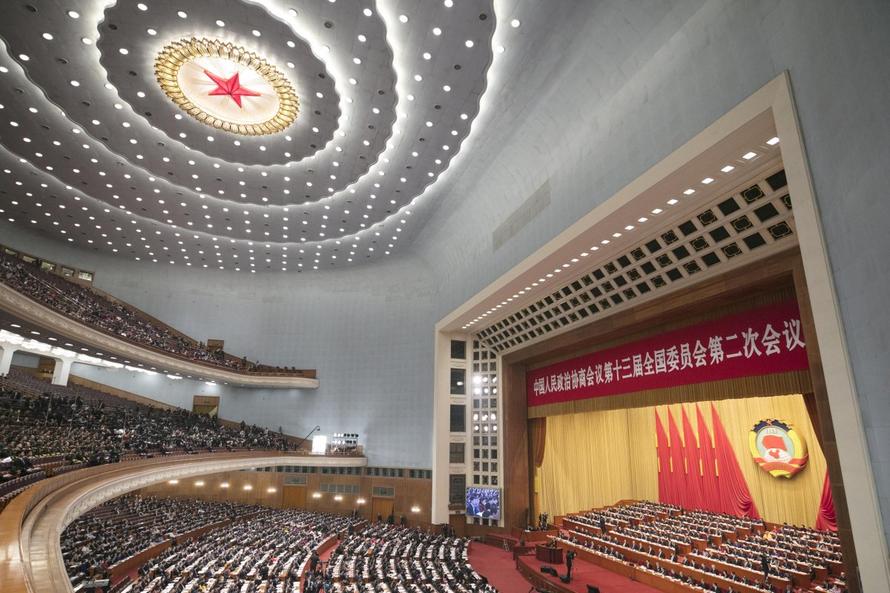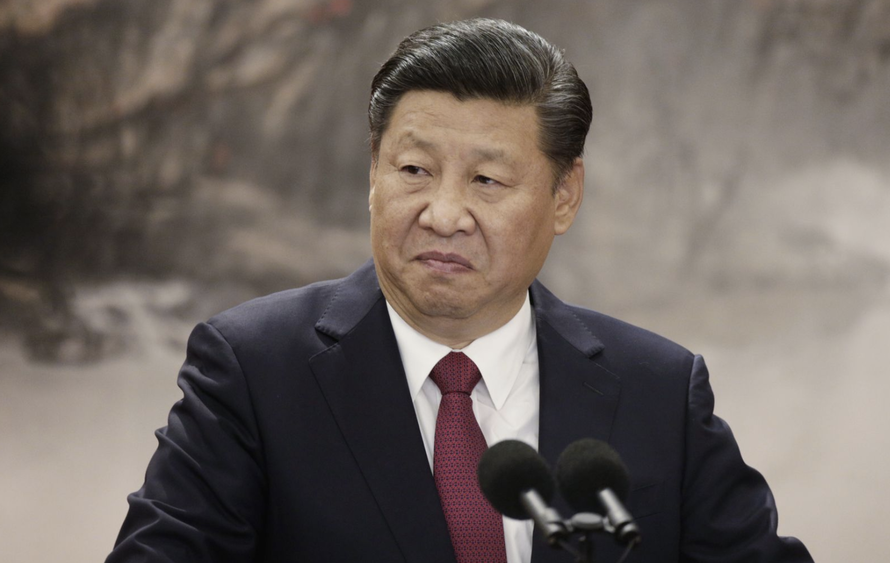On Tuesday, as part of its National Party Congress, China cut its economic growth target for 2019 once again, this time to 6.0-6.5%, down from last year’s target of “about 6.5 per cent.” The figure was revealed in the government work report to be delivered by Premier Li Keqiang as the National People’s Congress opens.
According to Bloomberg, the shift to a band from the previous practice of using a point figure gives policy makers room for maneuver and compares with last year’s “about” 6.5 percent goal. The lower bound of the GDP target would be the slowest pace of economic growth in almost three decades, a consequence of China’s long deceleration as policy makers prioritize reining in debt risks, fixing up the environment and alleviating poverty. Economist consensus sees output growth slowing to 6.2% this year from 6.6% in 2018, before easing further in 2020 and 2021.
This annual gathering of China’s political elite – which we discussed earlier – comes a year after President Xi Jinping amended the constitution to remove a presidential term limit and ahead of the 70th anniversary of Communist Party rule later this year.
China also announced a cut of 3% to the top bracket of value added tax in a move aimed at benefiting the manufacturing sector: such a cut could deliver a boost worth up to 600 billion yuan ($90 billion) or 0.6% of GDP, according to Morgan Stanley.
The target budget deficit for 2019 was set at 2.8% of GDP, higher compared to last year’s goal of 2.6%. The more modest growth target paired with further targeted stimulus measures typifies the government’s attempt to steady the economy after a bruising 2018 and marks a shift from last year’s edition, when the emphasis was on reining in financial risks and trimming budget outlays.
Below are the key highlights of what has been revealed so far:
On economic outlook
- GDP target 6%-6.5%
- Budget deficit 2.8%
- Consumer inflation at about 3.0%
- Aims to cut tax, social security fees by 2t yuan this year
- 3% cut to the top bracket of VAT
- Faces more challenges, risks
- Needs to brace for “tough” battle (doesn’t sound like a trade deal is imminent)
- Seeks stable trade while improving quality
- To further cut RRR for smaller banks to support private sector
- Will reduce population living in poverty by at least 10 million
- Fiscal policy will be proactive, stronger and more effective
- China plans to sell 2.15 trillion yuan in special local government bonds
On monetary policy
- Money supply growth, aggregate financing will keep pace with nominal GDP growth and be roughly in line with the 2018 actual growth rates
- Monetary policy will be prudent, paying attention to balance between tightening and loosening
On military:
- The defense budget growth target came in at 7.5% lower than 2018
On financial risks
- To keep macro leverage level “basically stable” (doesn’t sound like January’s record credit injection will be repeated)
- Will stick to structural deleveraging, pay attention to its strength and pace
- To prevent abnormal fluctuations in financial market
- To include more financial activities, markets, institutions and infrastructure in macro-prudential policy framework
On trade talks
- To continue pushing forward trade talks with U.S.
On opening up
- Steadily promote financial sector opening, attract more long-term capital inflows
- To improve opening measures for bond market
- To expedite making rules for outbound investment
- Enhance supervision of capital flows, risks in financial markets
- To deepen SOE reform in power, oil, rail sectors
- To increase imports of advanced technology equipment, energy and agriculture products
On economic development:
- To build a national oil and natural gas pipeline corporation
- Will create at least 11 million new urban jobs
- Will keep the urban jobless rate at about 5.5%
- Will keep the registered jobless rate at about 4.5%
- Premier Li warns tax cuts will create a “huge burden” for governments at all levels, which will now need to tighten their belts, and state-owned enterprises will have to hand in more profits
On property market:
- Decisively prevent and resolve property market risks; stabilize land and home prices and property expectations
On consumption:
- To consider policies to boost consumption of autos and home appliances
On FX:
- To increase flexibility of yuan FX rate, keep the rate ‘basically stable’ at a reasonable equilibrium level
- To keep FX reserves at a reasonable size
On market stability
- Encourage banks to lend mid and long-term to private companies, reduce funding difficulties for manufacturers, expand bond issuance by quality companies
- To keep stock, bond and FX markets steady; tackle abnormal markets in a timely manner
via ZeroHedge News https://ift.tt/2Ew6LnE Tyler Durden

